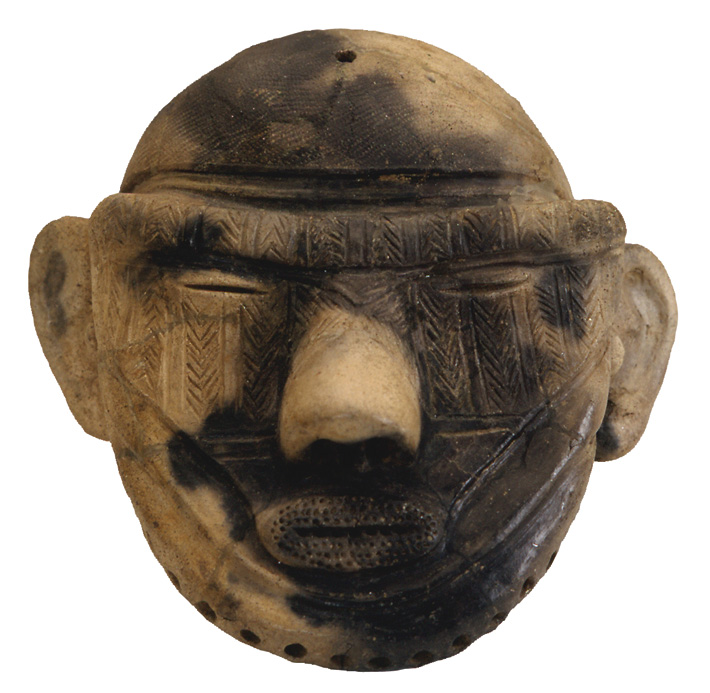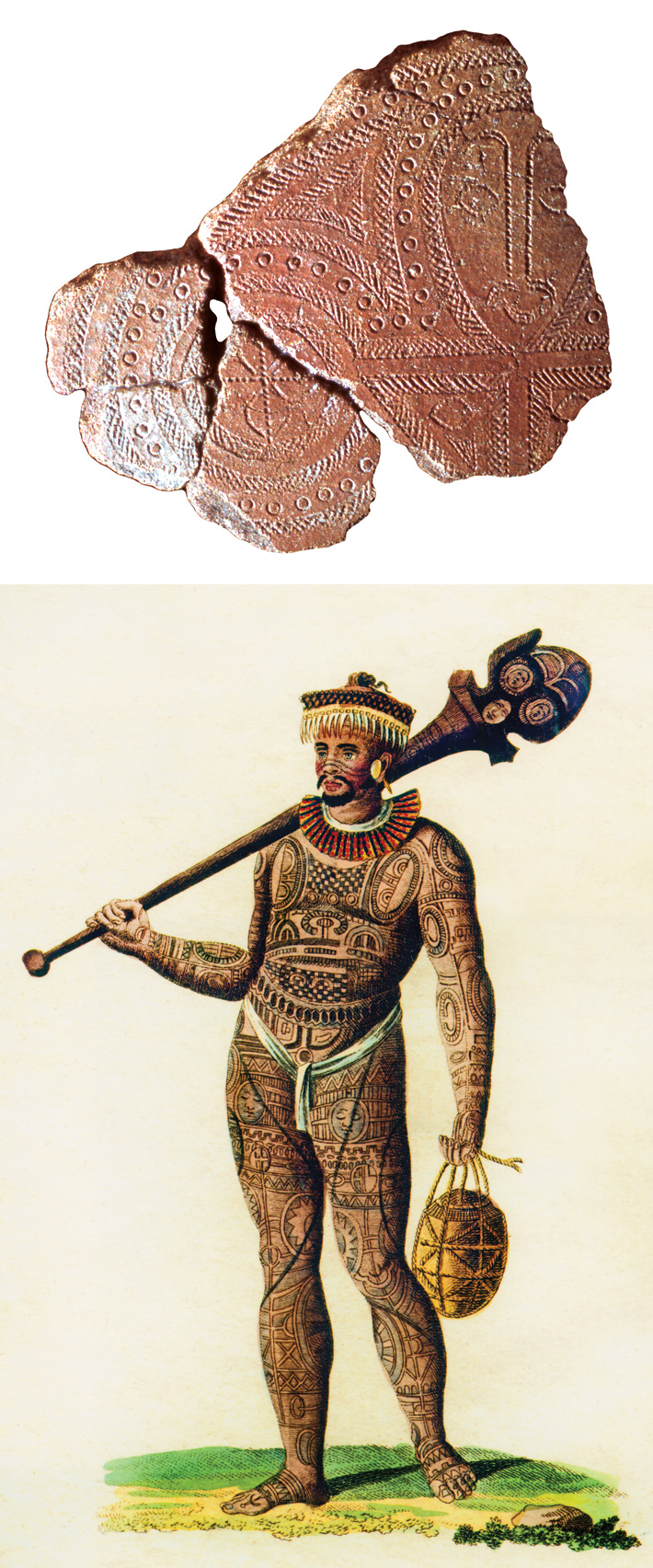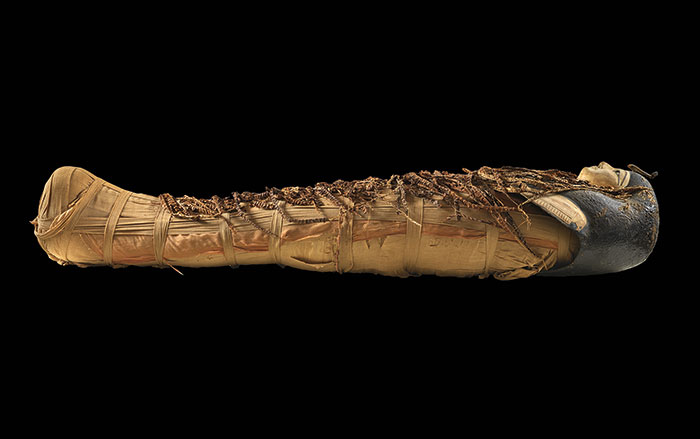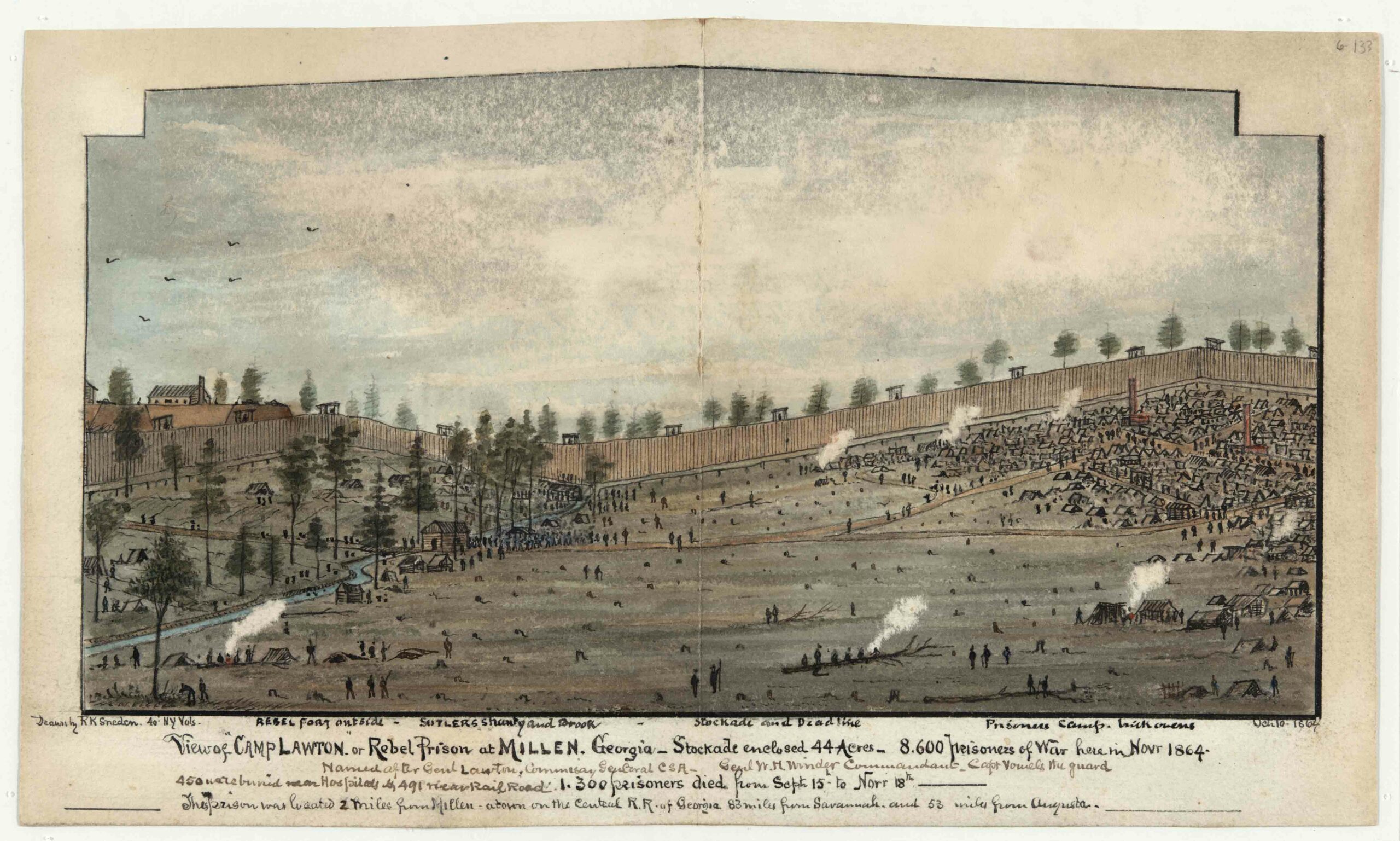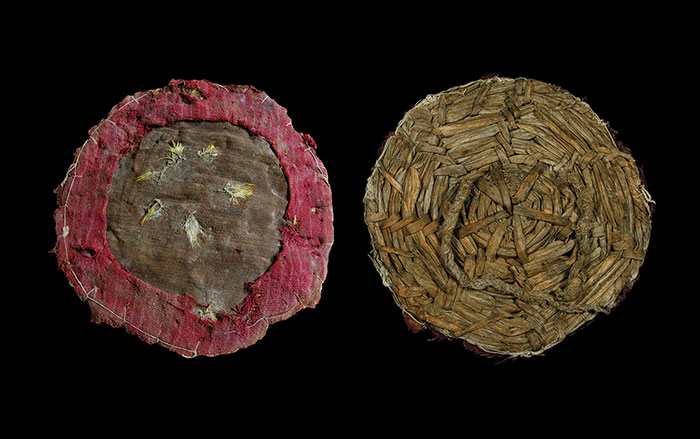
Culture: Egyptian
Location: Egypt
Date: Middle Kingdom, ca. 2033-1710 B.C. (figurine); New Kingdom, 1400-1300 B.C.
Among cultures known to have practiced tattooing, the ancient Egyptians appear to be the only one in which tattoos may have been the sole province of women. There are several examples of actual tattooed women, including the mummy of Amunet, a priestess of the goddess Hathor, which was discovered in 1891. However, ceramic figurines and vessels depicting tattooed women offer much more evidence. In the Middle Kingdom, footless faience figurines sometimes known as “Brides of the Dead” were created with patterns of lines and diamonds, primarily on their abdomens, but sometimes on their thighs as well. Although likely not a portrait of any individual, this example (left top) is of a type of figurine often found in homes, temples, and tombs, functioning as household items, offerings to the gods, or accompaniments for the dead. In addition to the tattoos, which are seen as sexually suggestive, the figurines often wear belts made of cowry shells, a symbol of femininity, and would have had copious amounts of hair—which was considered especially erotic—attached through holes in the head. Thus, it’s likely that the tattoos were considered one element of a woman’s sexuality, and that they may have been included in the tombs to continue the deceased’s sex life. Because some figurines have been found in female tombs, it’s also possible that they functioned as images of ideal femininity, of which tattoos were an important part. In the New Kingdom a novel kind of tattoo was added to the Egyptians’ repertoire. Women, especially musicians and dancers (left bottom), were sometimes depicted with images of the dwarf god Bes on their thighs, in addition to the more traditional geometric patterns. The Egyptians worshipped Bes as a protector of women in labor, children, and the home.


